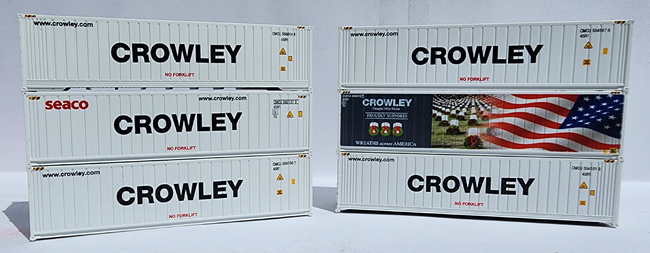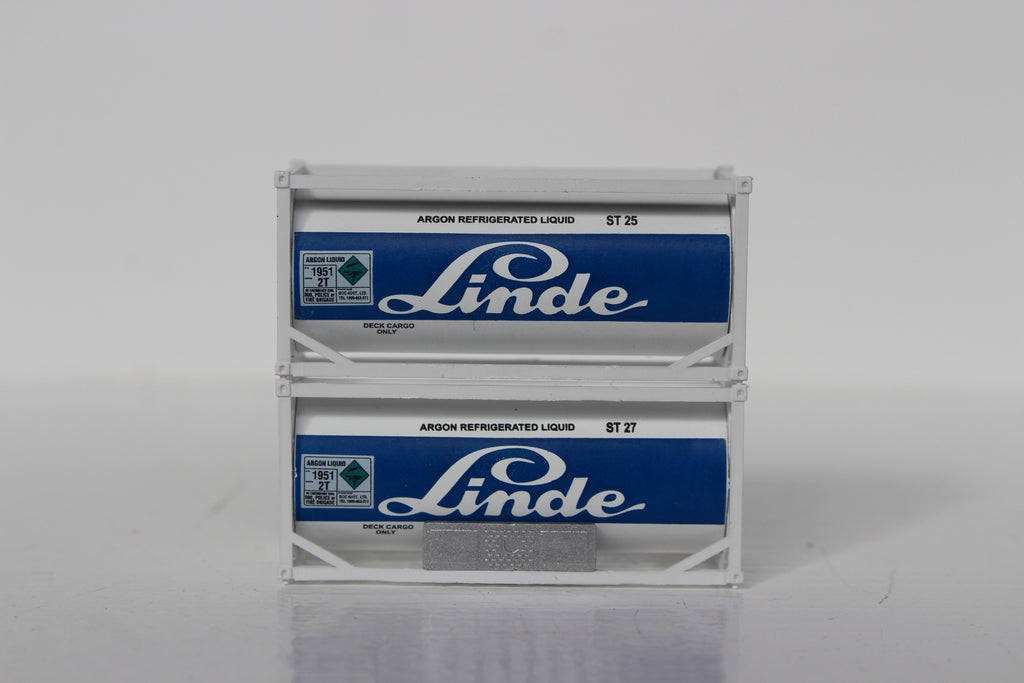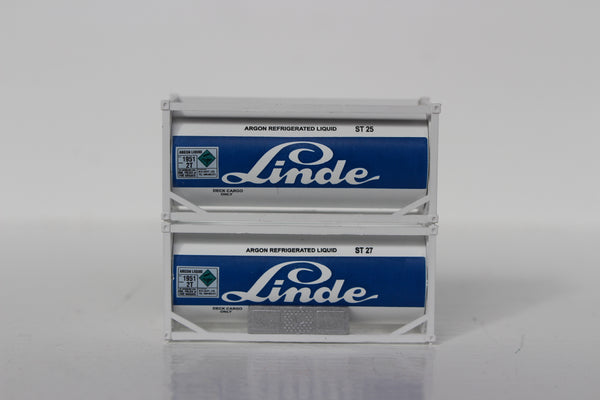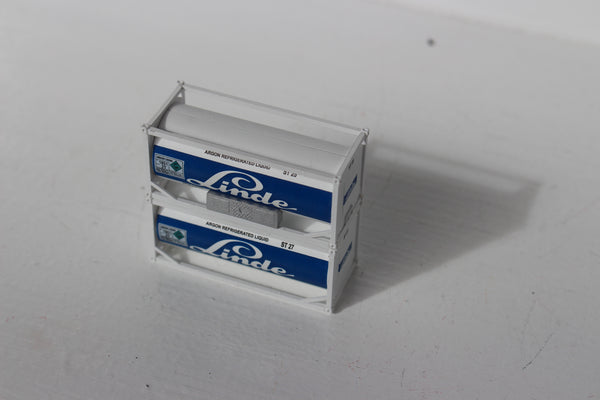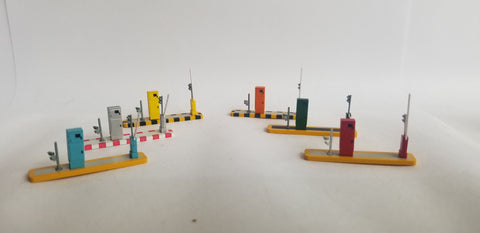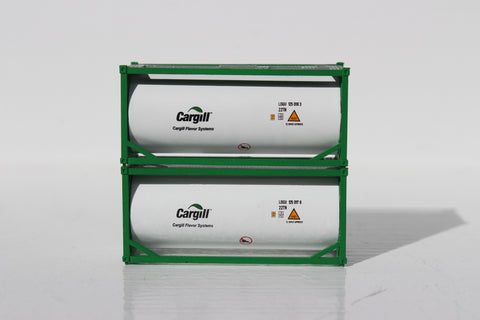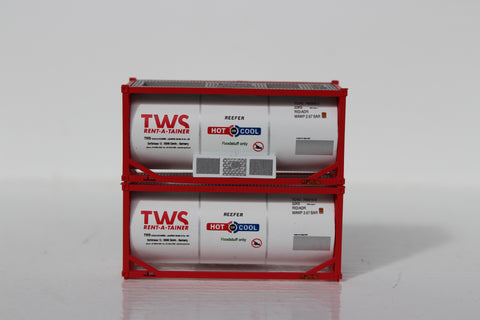Linde 20' Standard Tank Container ( NO walkway) JTC# 205215. Model is representative of use for ARGON Refrigerated Liquid Transport. The mechanical box would contain refrigeration equipment and connection points for loading/unloading. No Top access required.
These are also finely detailed, delicate miniatures with scales frames and details. Rules for Tank container transport provides for transport in the bottom of well cars, and on flatcars. If the tank container has hazardous liquid it should Not have another container stacked on top of it (look for Hazard label). If non-hazardous, other containers can be stacked on top. Tank containers do not ship double stacked in the Top position.
Model Features:
- IBC 'PIN' and holes for stacking
- multiple walkway configurations to match prototypes
- etched metal end ladder
- when required - mechanical unit (Heat / Cool) and Placard/Tool box as per prototype picture.
- precise printing as per prototype
- these do not have a magnet on bottom, as they do not ship stacked on top of another container.
About Linde -
Linde is a leading global industrial gases and engineering company with 2019 sales of $28 billion (€25 billion). We live our mission of making our world more productive every day by providing high-quality solutions, technologies and services which are making our customers more successful and helping to sustain and protect our planet.
The company serves a variety of end markets including aerospace, chemicals, food and beverage, electronics, energy, healthcare, manufacturing and primary metals. Linde’s industrial gases are used in countless applications, from life-saving oxygen for hospitals to high-purity & specialty gases for electronics manufacturing, hydrogen for clean fuels and much more. Linde also delivers state-of-the-art gas processing solutions to support customer expansion, efficiency improvements and emissions reductions.
Information Specific to Liquid Argon
Liquid argon is tasteless, colorless, odorless, non-corrosive, nonflammable, and extremely cold. Belonging to the family of rare inert gases, argon is the most plentiful of the rare gases, making up approximately 1% of the earth’s atmosphere. It is monatomic and extremely inert, forming no known chemical compounds. Special materials of construction are not required to prevent corrosion. However, materials of construction must be selected to withstand the low temperature of liquid argon.
Containers - Liquid argon is stored, shipped, and handled in several types of containers, depending upon the quantity required by the user. The types of containers in use are the Dewar, cryogenic liquid cylinder, and cryogenic storage tank. Storage quantities vary from a few liters to many thousands of gallons. Since heat leak is always present, vaporization takes place continuously. Rates of vaporization vary depending on the design of the container and the volume of stored product. Containers are designed and manufactured according to the applicable codes and specifications for the temperatures and pressures involved.
Liquid product is typically removed through insulated withdrawal lines to minimize the loss of liquid product to gas. Insulated flexible or rigid lines are used to withdraw product from storage tanks. Connections on the lines and tanks vary by manufacturer. NOTE: Liquid cylinders designed to dispense gaseous argon have valves equipped with standard Compressed Gas Association (CGA) outlets. Suitable pressure regulating equipment may be attached. Valves provided for the withdrawal of liquid product are also equipped with standard CGA outlets, but are different than the connections used for gaseous discs to protect the cylinders from pressure build-up. These containers operate at pressures up to 350 psig and have capacities between 80 and 450 liters of liquid. Product may be withdrawn as a gas by passing liquid through an internal vaporizer or as a liquid under its own vapor pressure.
